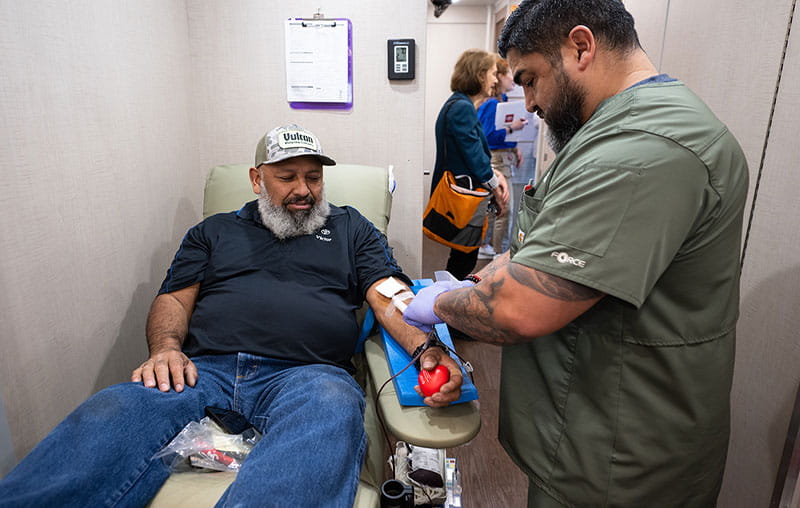Aracely Sanchez - Everyday Extraordinary
Breathing experts caring for our sickest COVID patients
The record number of COVID-19 patients inundating New York hospitals in March was a wakeup call for respiratory therapists at University Health. The patients needed ventilators to breathe, and there weren’t enough to go around. Doctors in the Big Apple were considering who would get ventilators and who might have to double-up and share one.
The respiratory therapist team at University Health didn’t want to be in that position. So, they executed a plan.
Preparing for a Surge
“I don’t think we reached a state of panic,” says Marivel Garcia, assistant director of respiratory care. “Our biggest concern was having enough equipment.”
The RTs, as respiratory therapists are called, knew ventilators being used for the most critically ill COVID-19 patients were becoming difficult to find. They also knew they could expand their inventory by using other more available devices to provide increased oxygen for patients who would need it to survive. They placed the orders for additional high-flow oxygen equipment and BiPAP machines, which are similar to devices used by patients with sleep apnea.
Department managers also looked at how they could strategically assign their RTs if the number of COVID-19 patients spiked. “Our goal was to keep the therapists with the most critical patients,” Garcia explains.
Preparation Pays Off
When the surge hit San Antonio, respiratory therapists were prepared. COVID-19 was compromising the lungs of many infected patients. The RTs took center stage as they applied their training to help patients breathe, though they were shocked at the severity of what they saw.
“Their lung compliance was nil. Their oxygen requirements were through the roof,” Garcia remembers.
While the most severely ill COVID-19 patients were placed on ventilators, the RT team worked with doctors and nurses to treat others with high-flow oxygen therapy and a practice known as proning.
By placing patients on their bellies in a face-down, prone position therapists could increase their oxygen flow. It helped those barely breathing, even with the assistance of ventilators. It prevented others from needing ventilation, a treatment that can lead to additional complications.
As the beds filled and the demand for respiratory care grew, the University Health team put in long, exhausting extra hours. The need for their skills became so great, outside RTs provided by agencies and the military joined the staff to provide support.
Through the many weeks and months of caring for patients with this little-known illness, respiratory treatment choices evolved. The RTs and medical teams were able to decrease the use of ventilators in favor of less invasive therapies.
“There were many of modalities we were told you shouldn’t perform but we had to learn for ourselves what was beneficial for our patients,” Garcia says.
Recognition and Appreciation
When the COVID-19 pandemic introduced the ventilator to households across the country, it thrust RTs into the healthcare spotlight.
“Ventilators were a main topic in the media. People began to realize who operated them on a daily basis and this brought more recognition for our profession,” Garcia says.
The rekindled pride in what they do, however, doesn’t get in the way of planning for what is expected to come next.
The flu season almost always hits in the fall. It will be another busy time for RTs, but they’re prepared.




